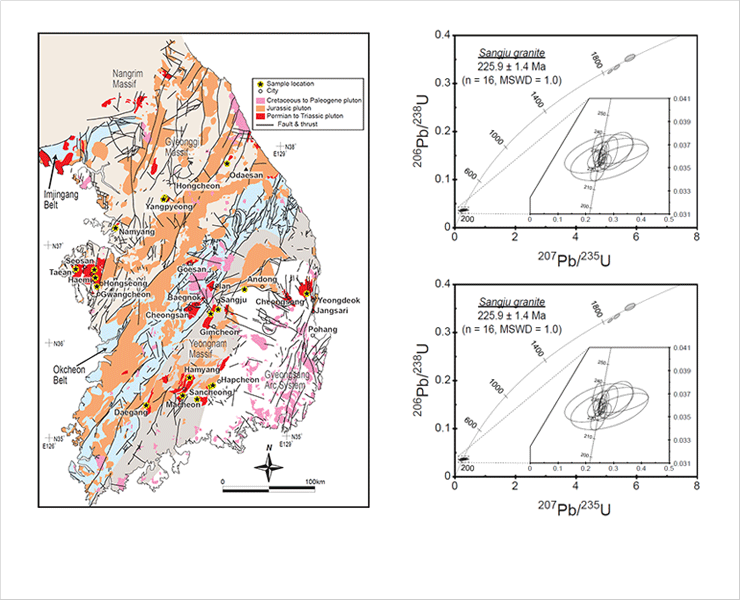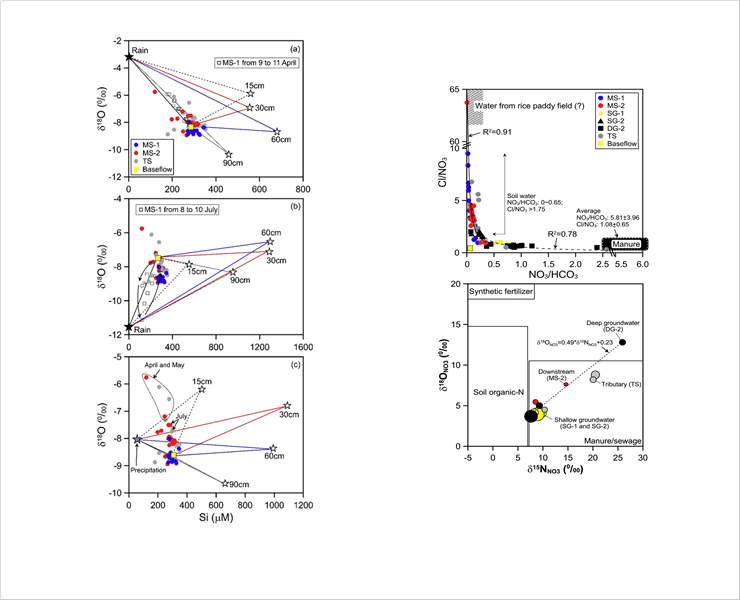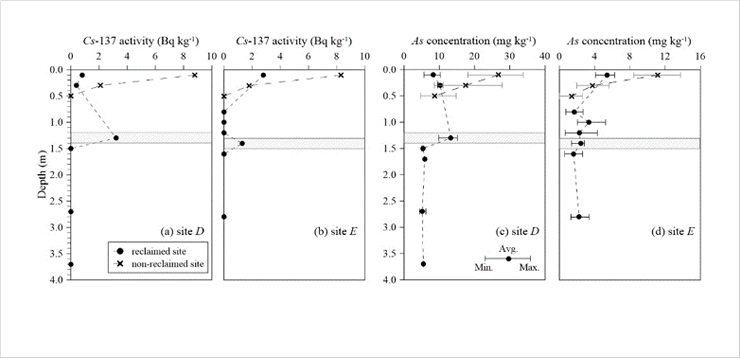Research Center for Geochronology & Isotope Analysis
Research Center for Geochronology & Isotope Analysis Analytical Science > Major Research Activities Home
Research Center for Geochronology and Isotope Analysis(GaIA) is leading the analytical science and technology in Earth and Environmental Sciences, based on world-class infrastructure for geochronology and Isotope analysis. The research range of the GaIA further extends to several essential National Agenda Projects related to dating Quaternary faults, tracing the geographical origin of agricultural products, and radiation decontamination etc.
Main Research Field
Geochronology
- Enhancement of radiogenic isotope dating techniques using Large Geometry Secondary Ion Mass Spectrometer(LG-SIMS)
- Technical development for the reconstruction of the Earth’s history using radiogenic isotopes
- Enhancement of dating techniques for dating Quaternary geological materials
Isotope Geochemistry
- Characterization of water cluster and natural organic matter in Korea's Good Water
- Development of integrated analytical technologies for discriminating the geographical origin of various agricultural products
Environmental Radioactivity
- Development of water security technology for the case of radioactive exposure emergency
Representative Research Cases
Magmatic response to the collisional and accretionary orogenies in Korea
- The magmatic response to the interplay of continental and oceanic plate subduction was investigated using whole-rock geochemical, zircon U-Pb geochronological and O-Hf isotopic data obtained from Triassic collision- and arc-related plutons in central and southeastern Korea (GSA Bulletin, 2019)
 A close link between the collisional orogenesis and subduction initiation
A close link between the collisional orogenesis and subduction initiation
Effects of irrigation return flow on water chemistry of stream and groundwater in a watershed
- Each portion of soil, groundwater, and rain water in stream water were calculated using three-component hydrograph separation model. The effects of irrigation return flow on stream and groundwater in a watershed were estimated to understand the water chemistry in more detail. The results will be useful to elucidate the sources and processes controlling water chemistry in stream and groundwater (Science of the Total Environment, 2018).
 Water chemistry impacts of irrigation return flow on surface and subsurface water, using combination of three-component hydrograph separation models (THSM), multi-isotopes and elements
Water chemistry impacts of irrigation return flow on surface and subsurface water, using combination of three-component hydrograph separation models (THSM), multi-isotopes and elements
Evaluation of multiple PRP’s Contributions to Soil contamination using radioactive cesium around historically contaminated site
- This study allocated the contributions of remedial responsibilities based on field evidences such as vertical distribution of radioactive cesium and amount of accumulated pollutants in a contaminated site. It provides more accurate evaluation techniques than previous literature-based method(Science of the Total Environment, 2018).
 The level of Cs-137 and arsenic with depth at reclaimed and non-reclaimed sites
The level of Cs-137 and arsenic with depth at reclaimed and non-reclaimed sites


